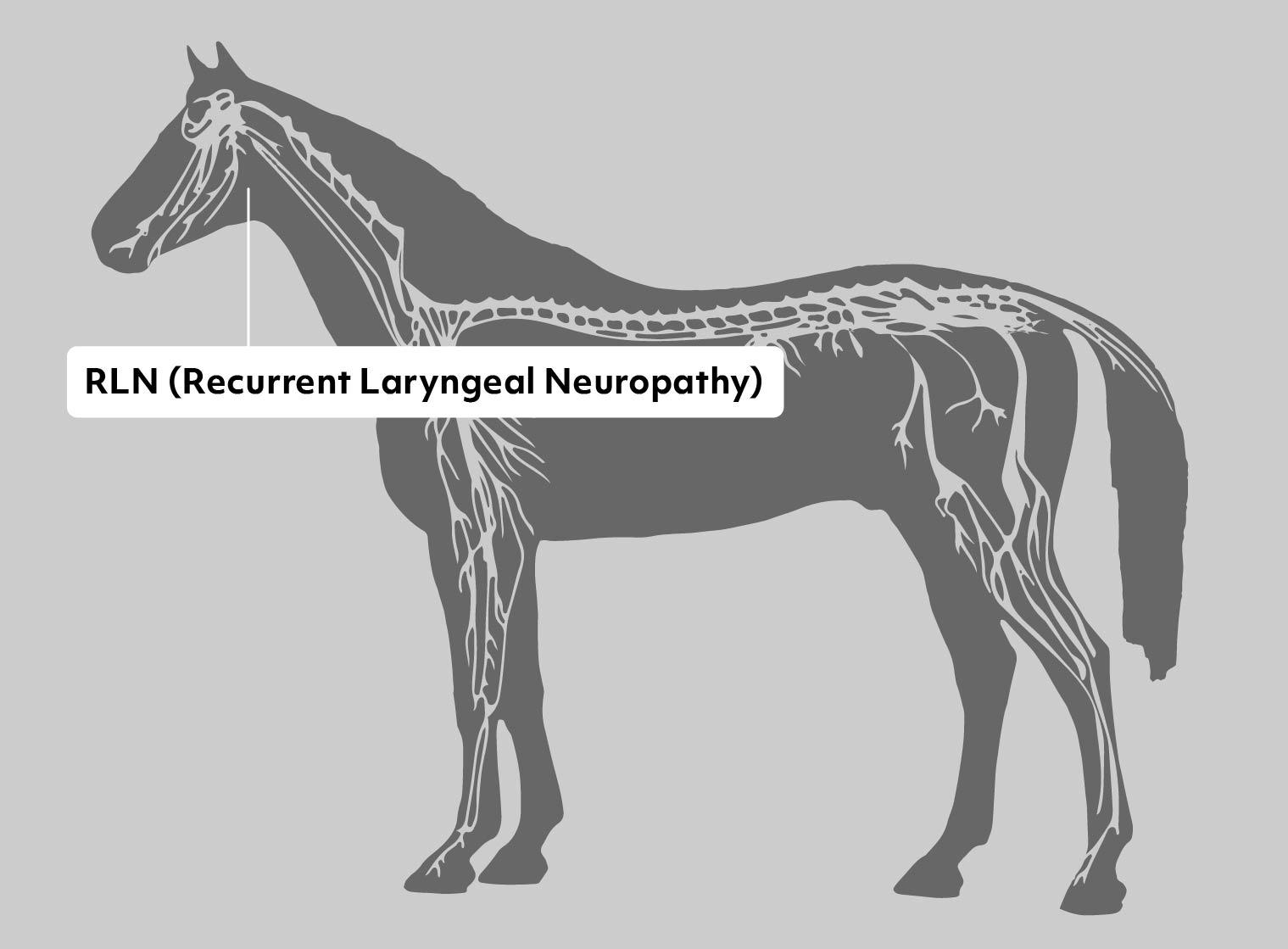Recurrent Laryngeal Neuropathy (RLN)
Gene or Region: ECA3
Reference Variant: T
Mutant Variant: C
Affected Breeds: Many
Research Confidence: High - Strong correlation in larger studies
Explanation of Results: RLN/RLN = homozygous for Recurrent Laryngeal Neuropathy Risk, ~12x higher risk than n/n RLN/n = heterozygous for Recurrent Laryngeal Neuropathy Risk, ~5x higher risk than n/n n/n = no variant detected
General Information for Recurrent Laryngeal Neuropathy
Recurrent Laryngeal Neuropathy (RLN) commonly called "Roaring" is a disease that results in loss of the neurons that open the larynx. Although we do not know what causes RLN, it significantly affects performance in Thoroughbreds and other sport horses. In technical terms, RLN represents a distal axonopathy of the recurrent laryngeal nerves, which is tpically expressed only on the left side of the larynx (the left nerve is the longest nerve in horses). RLN is also a mononeuropathy, as other peripheral nerves of the horse remain unaffected. RLN is an important issue for horses in competitive events, because the resultant paralysis of the larynx leads to obstruction of air flow during intense exercise. This obstruction creates the abnormal inspiratory noise that gives RLN its common name: “roaring.” Horses with RLN cannot breath normally at speed and as a result don't perform to their full potential. RLN has particular economic importance in Thoroughbred racehorses because these animals enter race training as 2-year-olds. Even though many thoroughbred horses sold at auction are endoscopically examined for evidence of RLN, the condition tends to develop with age, and may not yet be clinically evident in young animals.
A genetic contribution to the pathogenesis of RLN was previously suggested by the higher prevalence of the condition in offspring of RLN-affected than unaffected stallions. A 2014 study concluded that geldings are at higher risk than mares or stallions, and noted association to a site in the genome that also contributes to height.
References
Boyko et al., “Genomic analysis establishes correlation between growth and laryngeal neuropathy in Thoroughbreds.” (2014) BMC Genomics. 15:259. PMID: 24707981
Figure 1 from: “Equine Welfare during Exercise: An Evaluation of Breathing, Breathlessness and Bridles”, Mellor and Beausoleil, Animals 2017, 7(6), 41; doi:10.3390/ani7060041
More Horse Health
Equine Herpes Virus Type 1 & Induced Myeloencephalopathy
Equine herpesviruses are DNA viruses that are found in most horses all over the world, often without any serious side effects. Following infection of Equine Herpesvirus Type 1 (EHV-1) some horses then suffer Equine Herpesvirus Myeloencephalopathy (EHM), which is is accompanied by serious and sometimes fatal neurological effects. EHM in horses can have serious neurological symptoms on affected horses.
Equine Metabolic Syndrome / Laminitis Risk
Equine Metabolic Syndrome (EMS) is a wide-spread issue in the horse population. Primarily characterized by hyperinsulinemia (excess insulin circulating in the blood in relation to glucose levels), this metabolic disorder is often present in obese horses and ponies and can be challenging to diagnose as it can be misdiagnosed as "Cushing's" (a pituitary disfunction).
Equine Recurrent Uveitis Risk and Severity
Equine Recurrent Uveitis (ERU) is the most common cause of blindness in horses, affecting about 3-15% of the horse population worldwide. Characterized by episodes of inflammation of the middle layer of the eye, Equine Recurrent Uveitis in horses leads to the development of cataracts, glaucoma and eventually complete loss of vision.
